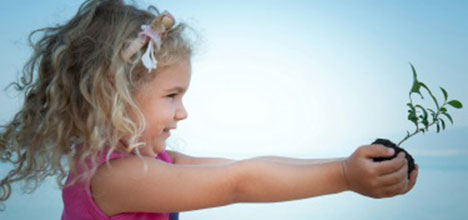


As the echoes of Girl Child Day still resonate, it’s imperative to delve into the distressing tales of adolescent tribal girls in Maharashtra, particularly within the Pardhi community. The media release from Child Rights and You (CRY) has unveiled a harsh reality—one that demands our attention and collective action.
Just two days ago, on the 11th of October, the world celebrated Girl Child Day, a day dedicated to acknowledging the rights, challenges, and triumphs of girls worldwide. However, amidst the celebrations, the plight of young girls in Maharashtra’s tribal communities, as exposed by CRY, urges us to reflect on the stark disparities that persist.
The narratives of Kavita and Pooja, albeit anonymized for their protection, serve as poignant reminders of the deeply entrenched issues that plague these communities. Kavita, at the tender age of 13, found herself thrust into the institution of marriage, her life intricately tied to financial transactions and societal norms. Pooja, not much older at 14, faced a similar fate—her early marriage, fights, and a second marriage arranged to settle financial debts.
The financial desperation within tribal communities like Pardhis, Bhils, and Thakars is a recurring theme. Girls, often viewed as commodities, are married off to alleviate debts, secure bail for family members, or simply for monetary gain. This transactional approach to marriage perpetuates a cycle of child marriages, as evidenced by the alarming statistics presented by CRY—a total of 396 cases of remarriage between 2020 and 2022.
Table 1, dissecting the district-wise data, paints a sombre picture of the prevalence of child marriages, with daughters being married off twice in distressingly high numbers. The data underscores the urgent need for targeted interventions to break this cycle and provide a more secure future for these vulnerable girls.
Beyond the statistics, the socio-economic conditions of these tribal communities come into focus. With less than 1% owning land, the Pardhis and nomadic tribes face perpetual displacement and a lack of access to natural resources. Poverty, coupled with the absence of educational opportunities, compounds their challenges, pushing them further into the margins of society.
The customs and traditions within these communities contribute significantly to their marginalisation. Superstitions and archaic practices create a regressive environment, impeding progress and perpetuating harmful norms. Customs like ‘Ghanavat’ (mortgage) and polygamy add layers of complexity to the struggles faced by these girls.
CRY’s commendable efforts in Ahmednagar and Pune to dismantle age-old customs and empower these communities are crucial. Through interventions in education, creating safe environments, and empowering adolescents, CRY aims to break the shackles of tradition. However, the challenges persist, as reflected in the 2023 data showing 622 girls at risk of marriage and 443 out-of-school girls in project areas.
In the broader context, the historical neglect of these communities, labelled as “born criminals” during British rule, continues to haunt them. This classification has resulted in their exclusion from essential services, depriving them of basic rights and recognition. The urgency to provide permanent settlements and identity to these communities cannot be overstated.
As we reflect on Girl Child Day, it is crucial to acknowledge that celebrations should not merely be symbolic but should translate into actionable change. The stories of Kavita, Pooja, and countless others demand our attention, urging us to advocate for policy changes, awareness, and collective efforts to ensure a brighter future for these vulnerable girls. On this day, dedicated to celebrating the girl child, let us not forget that our celebrations should be accompanied by a commitment to dismantling the barriers that deny these girls their right to a childhood. CRY’s four decades of commitment to underprivileged children stand as a testament to what can be achieved through persistent advocacy and intervention.
In conclusion, the media release from CRY serves as a poignant call to action. It prompts us to confront the harsh realities faced by adolescent tribal girls in Maharashtra and compels us to join hands in creating a future where every girl can truly live, learn, grow, and play without the shadows of early marriage and societal neglect.
Mamta Chitnis Sen is the Senior Manager for Media Advocacy at CRY